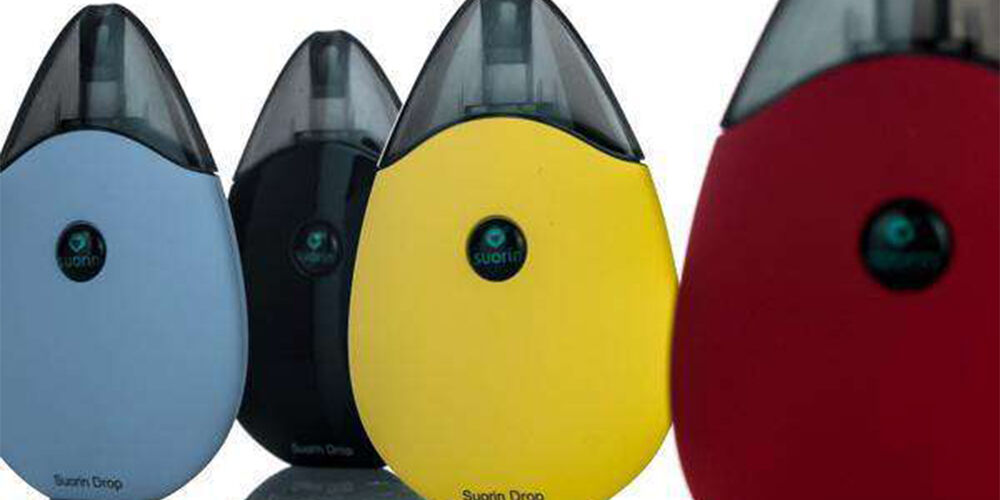3 Ways for Which Your Vape Tank Can Get Cracked
In many scenarios, vapers often prefer to use "tanks" or "tank systems" when vaping to maximize convenience and efficiency. These tanks are used to retain a sizable reservoir of e-liquid while limiting the amount of liquid that is exposed to an internal heating element or coil at any given moment. Sub-Ohm Tanks are designed to be used in scenarios in which "dripping" would be inconvenient or impossible.
To many vapers, tanks are highly viable options and can make vaping one's favorite e-liquid more simple and convenient than lighting an analog cigarette; however, with all of the convenience associated with tanks comes a plethora of concerns and potential complications. The main complication that can arise out of the use of tank systems is "cracking". Cracking can occur for a variety of reasons, all of which should be easy to avoid, granted that users exercise caution in a few different aspects of the operation, care and handling of their sub-ohm tanks.
The first and most obvious way that a tank can be cracked is through mishandling. Most tanks are crafted with either glass or plastic (poly-carbonate) cylinders which serve as the vape juice reservoir. If a "MOD" (customized/modified personal vaping device) or personal vaporizer is equipped with a glass or plastic tank, it is important that the user treat the device with care, as it is an easy task to become occupied with a matter and forget that a device equipped with a tank has been placed in a pants pocket or another place on the person. If a user places a vaporizer and tank within a pocket and sits down atop the device, the applied weight and pressure will, in most cases, serve as enough to crack the glass or plastic reservoir of the tank, thus rendering it all but useless. To avoid cracking a tank in this manner, vapers must always be careful to maintain awareness regarding the whereabouts and/or location of their personal vaporizers when performing other tasks. If a tank becomes cracked because of this type of situation, they must usually bring the affected item into the shop it was purchased from or contact the original distributor or manufacturer in order to be issued a repair or item replacement.
While it is widely understood that sub-ohm tanks are somewhat delicate or fragile constructions, there exists a complication within many tanks that even the most advanced, veteran vapers may be entirely unaware of or may often overlook unknowingly. This complication exists only in plastic or poly-carbonate vaping tanks. The construction of the plastic or "PC" used in vaping tanks and reservoirs is less than resistant to acidic liquids and many commonly used "abrasive" flavorings found in e-liquids worldwide. Such flavors include citrus liquids such as orange, lemon, lime, grapefruit, etc. along with miscellaneous abrasive flavorings including cinnamon, wasabi and a variety of others. These flavorings and e-liquids comprised of such flavors are often nicknamed "tank crackers" within the vaping community. Filling non-glass tank reservoirs with any such "tank cracker" liquid can often result in a cracked tank. It is advised that vapers familiarize themselves with the build quality and overall construction of devices before use or purchase to ensure that the utmost care can be devoted to said devices and equipment. If a tank is comprised of poly-carbonate or any non-glass or non-metal material, the safest assumption is that it will not be able to withstand the acidic and abrasive flavorings of citrus, cinnamon, etc. In such cases, steer clear of these liquids. In the event of this crack or any other, for that matter, users can sometimes find replacement tank portions designed for their specific device in shops or online.
A third, albeit more uncommon way in which vaping tanks can crack is because of excessive temperature change. It is of dire importance to remember that vaping technology is composed, in most cases, of computer hardware, batteries, and mechanical systems, all of which warrant excellent care and maintenance to ensure optimal operation and safety. If a vaping device is left unattended in a vehicle during summer months, wherein temperatures may become excessively hot, or excessively cold in winter, it is likely that vapers will return to their vehicle to find that their tank has cracked and/or leaked e-liquid all over the surrounding area. To combat this, users must maintain awareness regarding the location and conditions of their vaporizers, vaping hardware and accessories. Disposing of the tank following a crack is not always the best option, as replacement glass tanks can be found online at very affordable rates.
It is entirely possible to avoid ever cracking a vaping tank; however, to do so, vapers must take care in educating themselves regarding the ways in which tanks can crack and how to avoid lending themselves and their hardware to the situations that would allow for this to happen. Happy Vaping!
Tags: e-liquid, e-juice, cracking, tanks, devices, MOD, vaping tips
Attract attention and make a statement.
Showcase your brand with our custom table covers!





